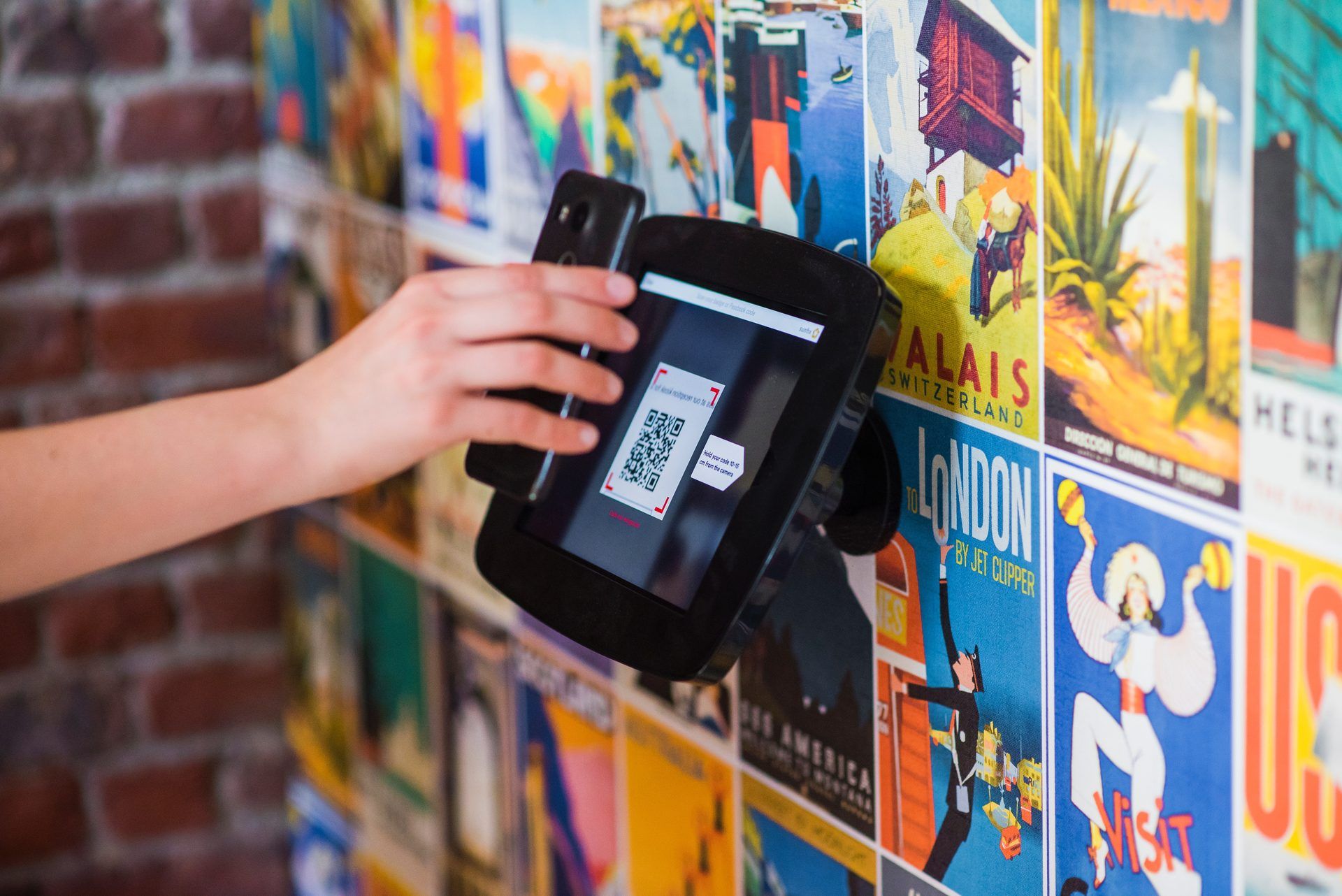In their quest for effectiveness and well-informed decision-making, businesses continually search for new ways to collect information. QR codes have emerged as versatile tools for data collection, comprising patterns of black and white squares. These codes have uses in a variety of industries and can be read by cell phones or special scanners. In the field of AI and ML, QR codes are incredibly helpful for improving predictive analytics and gaining insightful knowledge from massive data sets.
This article examines the important connection between QR codes and the domains of artificial intelligence (AI) and machine learning (ML), as well as how it affects the development of predictive analytics.

So let’s start with the understanding of QR Codes, Artificial intelligence, and Machine Learning.
Explanation of QR code
A QR code, also referred to as a quick response code or just a QR code, is a sort of barcode that is made to be quickly scanned and read by a smartphone or other specialized scanner. QR codes can contain a huge amount of information, such as text, URLs, contact details, and more.
The encoded data is decrypted when a QR code is scanned, allowing users to access the content that is embedded within the code. This decoded information can be instantly displayed on the scanning device, directing users to websites, displaying detailed product information, providing contact details, or executing other actions based on the encoded data.
Because of their adaptability and user-friendliness, QR codes have become more and more popular.
They can be created and printed on a variety of materials, including business cards, posters, product packaging, and even computer screens. This accessibility has made QR codes extensively utilized in marketing campaigns, product verification, customer interaction, data collection, and more.

By simply scanning a QR code using a smartphone, users can effortlessly access information or perform actions without the need for manual typing or searching. QR codes have become an effective tool for businesses to engage customers, gather data, enhance security measures, and streamline various processes. With advancements in artificial intelligence (AI) and machine learning (ML), QR codes are now being integrated into predictive analytics, allowing businesses to extract valuable insights from the data encoded within the codes.
Explanation of AI and ML
Artificial Intelligence (AI) refers to a field within computer science dedicated to the creation of intelligent machines, capable of executing tasks typically requiring human intelligence. Artificial intelligence systems’ main goal is to replicate mental skills like comprehension, solving issues, and making decisions. These algorithms allow AI systems to recognize patterns, forecast outcomes, and adjust to new situations. The applications of AI span diverse domains, including natural language processing, computer vision, robotics, expert systems, and machine learning.
Machine Learning (ML) serves as a subset of AI, specifically focusing on the development of algorithms and statistical models that enable computers to learn and improve from data without explicit programming. Some of the methods used in ML include supervised learning, unsupervised learning, reinforcement learning, and deep learning. ML finds extensive applications in various fields, including image and speech recognition, recommender systems, fraud detection, autonomous vehicles, and predictive analytics. Its capacity to analyze large datasets and uncover intricate patterns makes ML a formidable tool for extracting insights and making accurate predictions.
QR Codes in AI and ML
QR codes have gained widespread recognition as a valuable tool in integrating AI and ML technologies. These codes possess the ability to efficiently store and transmit information, opening up new avenues for enhancing predictive analytics. By harnessing the encoded data within QR codes, businesses can gain insightful information and make data-driven choices.
In the realm of AI and ML, QR codes find diverse applications across various domains. They can be effectively utilized for product authentication, enabling businesses to verify the authenticity of their products and combat the proliferation of counterfeit goods. Additionally, QR codes play a crucial role in enhancing customer engagement by facilitating interactive marketing campaigns, personalized offers, and seamless mobile experiences.
Moreover, QR codes serve as a mechanism for data collection and analysis. They provide businesses with the means to gather customer feedback, conduct surveys and polls, and capture essential user preferences and behaviors. This data can then be leveraged by AI and ML algorithms to generate predictive models and optimize business strategies.

QR codes also contribute to access control and security within AI and ML systems. By implementing contactless check-ins and utilizing QR codes for authentication purposes, businesses can enhance security measures while ensuring a convenient user experience. QR codes can be employed for managing permissions and authorizations, thereby safeguarding sensitive information.
Overall, the combination of QR codes and AI/ML presents a powerful synergy that amplifies the capabilities of predictive analytics. By leveraging the versatility and accessibility of QR codes, businesses can harness the potential of AI and ML technologies to make informed decisions, streamline processes, and deliver highly personalized experiences to their customers.
Summary
Access control and security are improved by QR codes, enabling organizations to increase security while improving user convenience. They make it possible for contactless check-ins and authentication, guaranteeing the security of private data.
In conclusion, the integration of AI/ML and QR codes creates an effective combination that transforms corporate predictive analytics. Businesses may make rational choices, streamline operations, and provide highly customized experiences to their clients by utilizing the adaptability and accessibility of QR codes.





